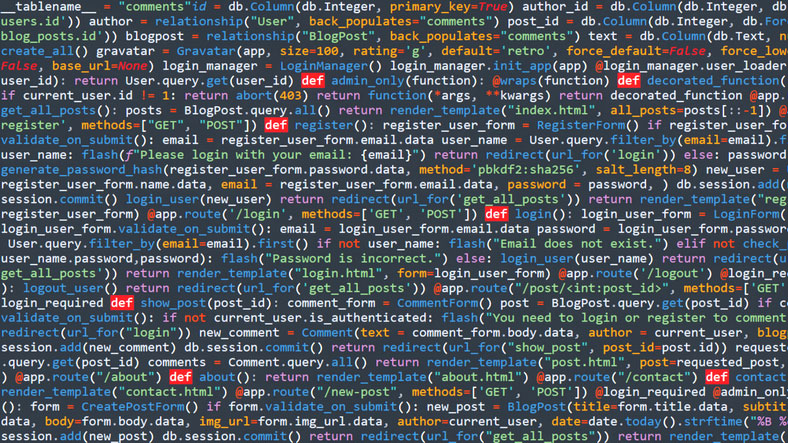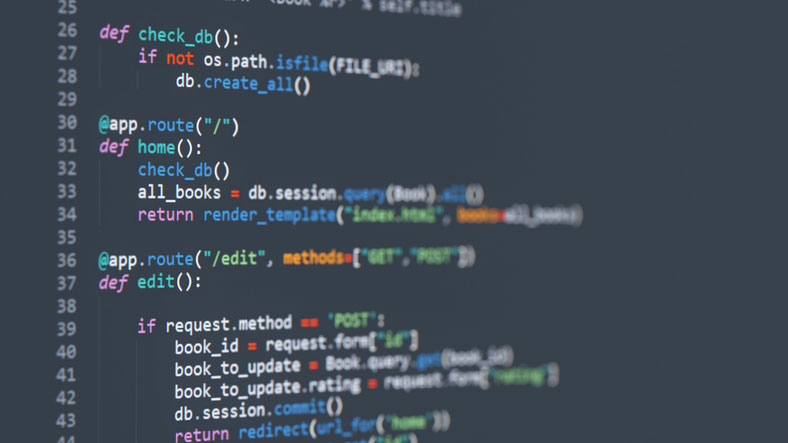Python Growth Rate Predictions

One of the first questions for any data science student to answer is which programming language they’d like to learn at the outset of their study. If you’re in this position, it’s worth giving serious consideration to Python, a top programming language that is showing signs of growing to even greater prominence in the future.
So what’s behind the Python growth rate, and why is the programming language such a popular choice for students, professionals, and businesses alike? What is Python used for today, and how will it be used in the future? Read the article below for answers to all of these questions and more.
What is Python?
Python is one of the top programming languages in the world, and is many people’s entry point into the world of coding. It is known as a (relatively) approachable and even intuitive programming language that has a variety of applications, from software design and web development to task automation to even AI and machine learning.
Anyone interested in pursuing a career in data science would benefit from learning Python, as it is so widely used by businesses of all types.
If you are deciding which program language you’d like to take on as your foray into coding, it’s worth giving serious consideration. For more information on Python’s capabilities as well as the jobs that make use of it, take a look at our article here.
Appearance Matters: Python Code Examples
One of the defining features of Python is its attractiveness relative to other programming languages. Even if you don’t know how to code, this is plain for the eye to see. Take this side by side comparison with Java:
Python
print(“Example text.”)
vs.
Java
public class Exampletext {
public static void main (String[]args) {
System.out.println.(“Example text”);
}
}
As you can see, Python is far simpler and more straightforward, which partly explains why Python growth has exceeded Java in recent years.
Why is Python still growing?
In recent years, Python has continued to boom as a leading programming language.
Python growth can be attributed to a variety of factors, starting with the qualities that make it a logical starting point for so many people: it is versatile and accessible.
This has, in turn, led to a huge Python growth rate, as these factors make the programming language an attractive choice for large companies to use, including the following industry leaders:
- NASA
- Spotify
- Dropbox
Trends
Because Python is such a versatile coding language, it has been able to stay relevant even as technology has evolved and business’ needs have shifted. Indeed, flexibility is one of the paramount characteristics of python. Here are a few of the reasons why:
- Machine learning and AI. This is a rapidly growing subfield of data science, and Python has proven that it is an effective programming language to achieve these advanced computer uses. This is one of the most important ways that Python is likely to stay viable in the future.
- Programming applications. This has proven to be one of the biggest reasons why major companies are turning to Python: it is highly useful for app development, from video applications to ones that use blockchain.
- Data analytics. The field of data analytics is quickly expanding in step with our growing dependence on data. Python has long been a go-to language for data analysts, and as individuals produce ever-larger volumes of data, there will be a greater need for Python-trained data analysts than ever.
Given its growing usage and ever-expanding functionalities, it seems likely that the exceptional Python growth rate of the past several years is likely to extend for years to come. In particular, Python’s uses in cutting-edge programming endeavors involving AI and machine learning make it a safe bet to stay relevant into the future, as it will be included in these game-changing conversations while other current tools and conventions get left by the wayside.

Data Science Jobs That Use Python
As mentioned above, Python is a programming language used by a huge variety of businesses to serve an equally large variety of functions. Some of the top job titles for programmers with fluency in Python include the following:
- Python Developer
- Full Stack Developer
- Data Scientist / Data Analyst
- Data Engineer
- Machine Learning Engineer
- Performance Marketer
Jobs That Use Python: Growth Rate and Salary Data
Good news for prospective data scientists who are still deciding their intended profession: all of the job titles listed above can expect to receive tremendous salaries and exceptional job growth rates. While the Bureau of Labor Statistics does not track which professions make use of Python specifically, it reports stellar median annual salaries for the top data science professions, many of whom can be assumed to use Python in their work. These include data scientists, who earn a median annual salary of $100,910; computer information and research scientists, who earn a median annual salary of $131,490; and software developers and testers, who earn a median annual salary of $109,020.
The growth rate projections for these jobs over the next ten years are equally eye-popping. The BLS estimates a 36% job growth rate for data scientists; a 21% growth rate for computer and information research scientists; and a 25% growth rate for software developers.
In light of how many of these jobs use Python as their primary coding language, it’s safe to say that the Python growth rate over the next decade is likely to be exceptional.
Taking the Next Steps to Become a Data Scientist
If you are inspired to become a data scientist and develop impactful programming skills in Python, your next step will be pursuing your master’s degree, which will teach you everything you need to know to enter this competitive and high-value profession.

To view a complete list of the best data science colleges, including data science program rankings and data science subfields, take a look at our programs guide here.
For additional resources, visit our index here.
For an even more extensive overview of data science education opportunities, including the best statistics master’s programs and marketing analytics degree online programs, visit our homepage here.
FAQs
What is the future of Python?
Python has a promising future, as it is already used by a large number of top companies for booming areas, such as data analytics, and has uses in endeavors at the cutting edge of programming, such as machine learning. This means it is quite likely to remain a top coding language for data scientists in a variety of disciplines for a while to come.
Is Python in demand?
Yes – very much so. Because Python is the programming language currently used by such a wide variety of leading businesses in so many different applications, there are many job opportunities for those who are fluent in it. It is an excellent choice of coding language for newcomers to data science.
Is Python hard to learn?
As programming languages go, Python is considered to be relatively accessible and intuitive. For this reason it is frequently recommended to beginner data science students.








